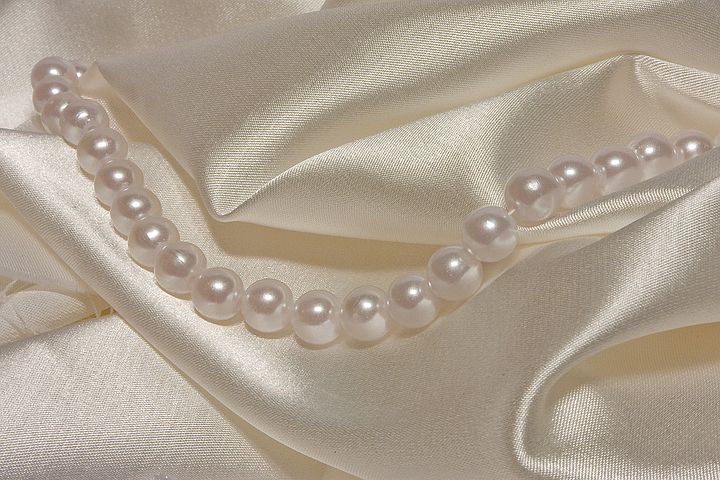Some fake pearls are made of glass, plastic or pro powder. In addition to fake pearls or imitation pearls, there are also shell pearls, which is made up of blended shells to make shell pearls.
How can you tell the pearls are real or fake when you are buying your pearls?
Today, it is quite rare to get natural grown pearls. Many pearls we see in the market or for sale today, are usually farmed cultured pearls. Pearls are usually found or culturedly farmed and grown in oysters, sea shells, mussles, snails and even abalones.
It is common to hear the tooth or touch test to test if pearls are real or fake. However, if you are not used to telling real pearls from fake ones, they are quite difficult to tell the difference.
One of the common and easiest way to tell if your pearls are real or fake are from the rubbing or light scraping test below.

Rub Test On Pearls
When you scrape or use two pearls to rub onto each other gently, you would always get flakes of pearl powder as a results. The scratch marks would go away when you clean and rub your real pearls with a soft, cleaning cloth. Fake pearls slide easily and may not have the flakes of pearl powder as a result of rubbing and would even leave scratches marks on the pearls.
Other types of tests as stated below, can also be used to test, if your pearls are real or fake.
- Tooth Test
You can use a pearl to rub it against the front of your teeth. You can feel a bit of texture or very slight roughness, it is usually real pearls. Fake pearls are usually very smooth. - Touch Test
When you touch your pearls with your hands, you can feel that they are cooler in temperature, than normal objects, though placed in normal room temperature. Note that when you wear your pearls, as they rub against the warmth of your skin, they may not be cool. So, this test is applicable when your pearls are left in normal room temperature and not worn. - Colour Overtone Test
Real pearls have orient or inner colour or overtone on them. When every pearls look exactly the same or very silver, black or white, with no secondary colours they may mst probably be fake pearls. Inconsistencies in colours or shapes for real pearls are very common. - Fire Test
This may be a more damaging test that may harm your real pearls if not done properly. Real pearls may get the blackening on the outer powder on them when you flash lighted fire onto them for a little while, but you can rub or clean them off on real pearls, with no damage. Fake plastic pearls would get burnt. - Drill Hole Test
When you have a drill hole on pearl, you will see very clean holes on fake pearls while drills on real pearls, you may see powdering remaining on the drill. - Weight Test On Pearls
Pearls usually have a usual weight. A 10mm cultured pearl will usually weigh around 4 carats or 4/5 gram. Weighing your pearl grain can tell you which is real or fake pearl. Plastic pearls will feel light while glass pearls may feel a little heavier.
